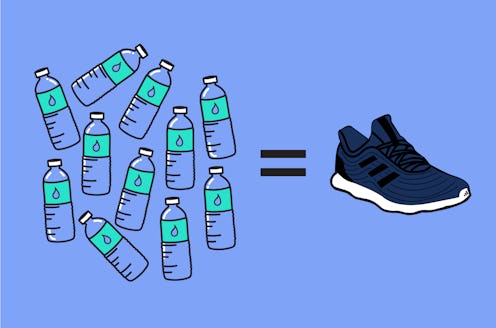Life
5 Reasons Why Our Oceans Need Your Help

Now that summer is finally here, there's a good chance you're dreaming of your next beach vacation. Every year, millions of people flock to the coastlines to marvel at the majestic wonder of our oceans. Is there anything better?
But unfortunately, when it comes to the health of our oceans, the picture is not so bright. Ocean pollution is reaching crisis levels, and marine plastic pollution — a term that refers to the buildup of plastic debris in ocean waters and coastal regions — is one of the biggest challenges facing our planet today.
According to a 2017 study, the world has produced over 9.1 billion tons of plastic in the past 70 years. Nearly 7 billion tons of that plastic is no longer in use, and only an estimated 9 percent (!) of it was recycled.
Even worse? This marine pollution is expected to accumulate even more rapidly in the coming decade.
It's no secret that this issue is in desperate need of our attention. But our attention isn't enough — we must ALL do our part to help offset this crisis before it gets any worse.
That’s why adidas has teamed up with Parley for the Oceans in an effort to prevent even more plastic from entering our oceans. Through their partnership, they're spreading awareness and literally transforming this plastic pollution into high-performance sportswear.
Yup, you heard that right.
Parley Ocean Plastic is a material created from upcycled plastic waste that is intercepted on beaches and in coastal communities before it reaches the oceans. One pair of adidas Parley shoes prevents approximately 11 plastic bottles from entering our oceans.
And adidas’ commitment to the environment doesn’t stop there.
This year, for the first million kilometers logged through the Runtastic or Joyrun apps, adidas will contribute ONE MILLION DOLLARS to the Parley Ocean Plastic Program.
There's no doubt that adidas x Parley are doing their part to save our oceans; here are 5 reasons why you should do yours.
1. There is a literal island of plastic floating in the Pacific Ocean.
Colloquially known as the “Great Pacific Garbage Patch,” this mass of trash is TWICE the size of Texas and largely comprised of plastic debris. Microplastics — small plastic pieces frequently used in cleaning, bath, and beauty products — are a major source of this mass.
By avoiding products such as laundry and dishwashing pods, paper cups (which, despite their name, contain a significant amount of plastic), and non-septic safe cleaning wipes, you can help to reduce this mass of microplastics.
2. Ocean pollution begins on land.
According to the National Ocean Service, as much as 80 percent of marine environment pollution comes from the land. These ocean contaminants come from sources like septic tanks, boats, and cars. Oil drips from millions of car engines onto roads and parking lots, and eventually makes its way into our oceans.
So, if you live close to work, throw on some adidas Parleys and walk instead of driving! If not, consider taking public transportation or enrolling in a rideshare program, which will significantly reduce the number of ocean-polluting cars on the road.
3. Virgin plastic is used in almost EVERYTHING we consume.
A quick scan of your immediate surroundings will reveal just how ubiquitous the use of plastics has become. Furniture, dishes, product packaging, and toys are just a few categories of items that count plastic among their key components. Even the clothes on your back likely contain plastic: As cotton production has plateaued, polyester production has increased, which has resulted in clothing that is cheaper to produce...but harder to recycle.
adidas x Parley are using Parley’s eco-innovative replacement for virgin plastic to help combat this phenomenon. You can join the fight by reusing plastic containers, taking advantage of clothing recycling programs, and purchasing products packaged in cardboard rather than plastic.
4. The number of fish and other sea creatures in the ocean is rapidly dwindling.
The biodiversity of our oceans is under serious threat. The United Nations Development Programme estimates that by 2050, the oceans could contain more plastic than fish (when measured by weight). Additional studies have shown that since 1970, the number of fish and other sea creatures in the ocean have been reduced by half. This rapid decline is a result of marine pollution as well as overfishing. The solution to both problems, in part, is the creation of more Marine Protected Areas.
Organizations like the Marine Conservation Institute are working to increase the number of protected areas in our oceans by 10 percent by 2020; you can get involved by educating yourself and others, writing to your representatives, and advocating on behalf of our oceans.
5. Oceans are the Earth’s largest ecosystem.
Need a breath of fresh air during your morning run? Then you need our oceans.
Oceans are the earth’s largest ecosystem, generating 50% of the air we breathe. Oceans also absorb carbon dioxide from the atmosphere and reduce the impact of climate change. So the next time you pause for a deep breath on a beautiful day, remember where that clean air comes from!
With clean air in your lungs and adidas Parleys on your feet, you’ll be ready to do your part in making our world a better place.
adidas x Parley invite you to run for the oceans — every kilometer counts.
This post is sponsored by adidas.